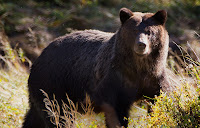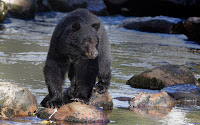I have been a regular visitor of Ian Plant’s Dreamscapes blog, http://www.ianplant.com/blog/
I like what he and the other bloggers on his team have to say about landscape photography. Someday I hope to get to their level of imagery. They have a lot to say about the photography ‘rules’ that are supposed to be followed. The Dreamscapes photographers generally follow them but they also disregard them; the 'rule of thirds', 'do not use backlighting'... When I am out shooting I usually forget some of the rules because I am still concentrating on basic composition, exposure, focus and the 10 or so other things I can adjust on a digital camera. Most of the time they work out without remembering everything. Afterwards I can usually look at many of my images and see where I could have improved the image by changing this or that; a little less exposure, different focus, move the camera a foot or two to the right, left, up or down. I will get better as time goes on; I just have to get off my butt more often and shoot more.
 Digital photography is easier than film photography in some ways but more challenging in others. Once upon a time you put a roll of film into a camera you would shoot making the normal adjustments of lens aperture and shutter speed based on the speed rating of the film. The drawback was that you would have to wait some period of time before you would see results. With the digital cameras you do the same thing; with the aperture and shutter, plus you can program the camera to automatically under and over expose multiple images, change color balance, adjust the flash output, saving image quality, ... The great plus with digital photography is the instant feedback and not having to stop and load a new roll of film after 24 or 36 images. Does this lead to shooting quantity instead of quality?? Probably, you can always throw away the bad ones, 'images are free once you invest in the memory card of choice'. You have to invest your time to find which images you want to keep, or not. I can only suggest to those of you new to digital photography to purchase the 'XXX camera' book for your specific camera to understand the bells and whistles on your camera (I found the Canon manual for my camera far short in explaining all the different options).
Digital photography is easier than film photography in some ways but more challenging in others. Once upon a time you put a roll of film into a camera you would shoot making the normal adjustments of lens aperture and shutter speed based on the speed rating of the film. The drawback was that you would have to wait some period of time before you would see results. With the digital cameras you do the same thing; with the aperture and shutter, plus you can program the camera to automatically under and over expose multiple images, change color balance, adjust the flash output, saving image quality, ... The great plus with digital photography is the instant feedback and not having to stop and load a new roll of film after 24 or 36 images. Does this lead to shooting quantity instead of quality?? Probably, you can always throw away the bad ones, 'images are free once you invest in the memory card of choice'. You have to invest your time to find which images you want to keep, or not. I can only suggest to those of you new to digital photography to purchase the 'XXX camera' book for your specific camera to understand the bells and whistles on your camera (I found the Canon manual for my camera far short in explaining all the different options).
Back to the real idea behind this post...
In the Dec 29, 2012 Dreamscapes post Ian talks about selecting your 12 greatest images over the last year. So I looked through what I shot since I bought my DSLR and selected 12 images I like. If nothing else these are my favorites, they remind me of what I did and where I went this year. If you have been following this blog at all this year you will recognize some of the images. Over time I’m sure some images will become a bit more abstract which may turn some people off, or at least leave you scratching your heads at what I was thinking when I made that image. Let me know what you think as I post images over the next year.
 I will post a bit of commentary with some of these images. They are in no particular order so do not consider the first image the best of the 12. I will supply the 12 images over two separate postings.
I will post a bit of commentary with some of these images. They are in no particular order so do not consider the first image the best of the 12. I will supply the 12 images over two separate postings.The first two images are from my trip to the Great Bear Rainforest. No matter how much planning I thought I had done and checking camera settings I got excited when the bears made their appearance and didn't get as many good shots as I thought. I doubt that will ever change unless seeing wildlife like this around you all the time becomes common place.
The next two are also from my trip to the Great Bear Rainforest. Being in a boat full of photographers heightens ones senses to pay attention to the area around you for a great photo.
The next two photos are shot with my 100mm macro lens. I like shooting closeup photos, they show things going on around you on a different scale than most people consider. You have to be lucky, or patient or both to work on this scale especially with insects. They have a mind of their own and generally do not sit around waiting for you to compose and focus the camera. The bee image is more luck than patience since bees were going back and forth on this particular flower. I've photographed very few images of a bee in flight AND in focus! The dragonfly image was more patience with some luck. There is a dragonfly pond at the Albuquerque Bio Park where dragonflies are in constant motion. I hung around the pond for quite a while watching where they were landing and camped out above one of the reeds where they would sit for a bit. After several attempts at different dragonflies I finally got one in focus and in a nice position. (No dragonflies were hurt in the making of this image)
Thank you for stopping by,
Mark




Are you going to be giving tips about photography??? What about messing with your pics AFTER you've taken them, with an editing program? I have to look up that book, my manual is sorely lacking also.
ReplyDeleteI hope to point out some of the things I did on the images which may help you with your images.
ReplyDeleteWorking with editing software is a whole other issue. Photoshop CS6 has a steep learning curve and is very expensive, $700+. Photoshop Elements does most of what CS6 does at a very low cost, possibly in the $100 range. Again I suggest a book by an outside publisher. Scott Kelby has some good books on different versions of Photoshop. Good luck
Mark, Your photographs are fantastic! Gail and I look forward to seeing your photography evolve. In the meantime, we really enjoyed them. Thanks.
ReplyDelete